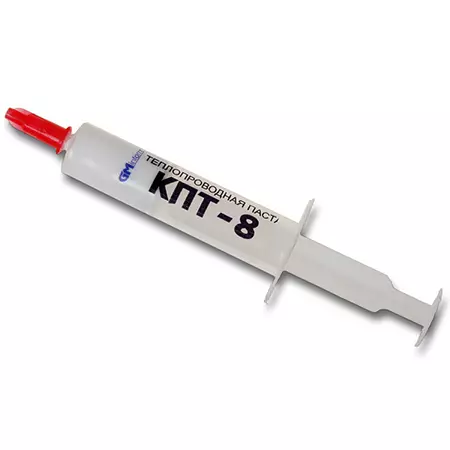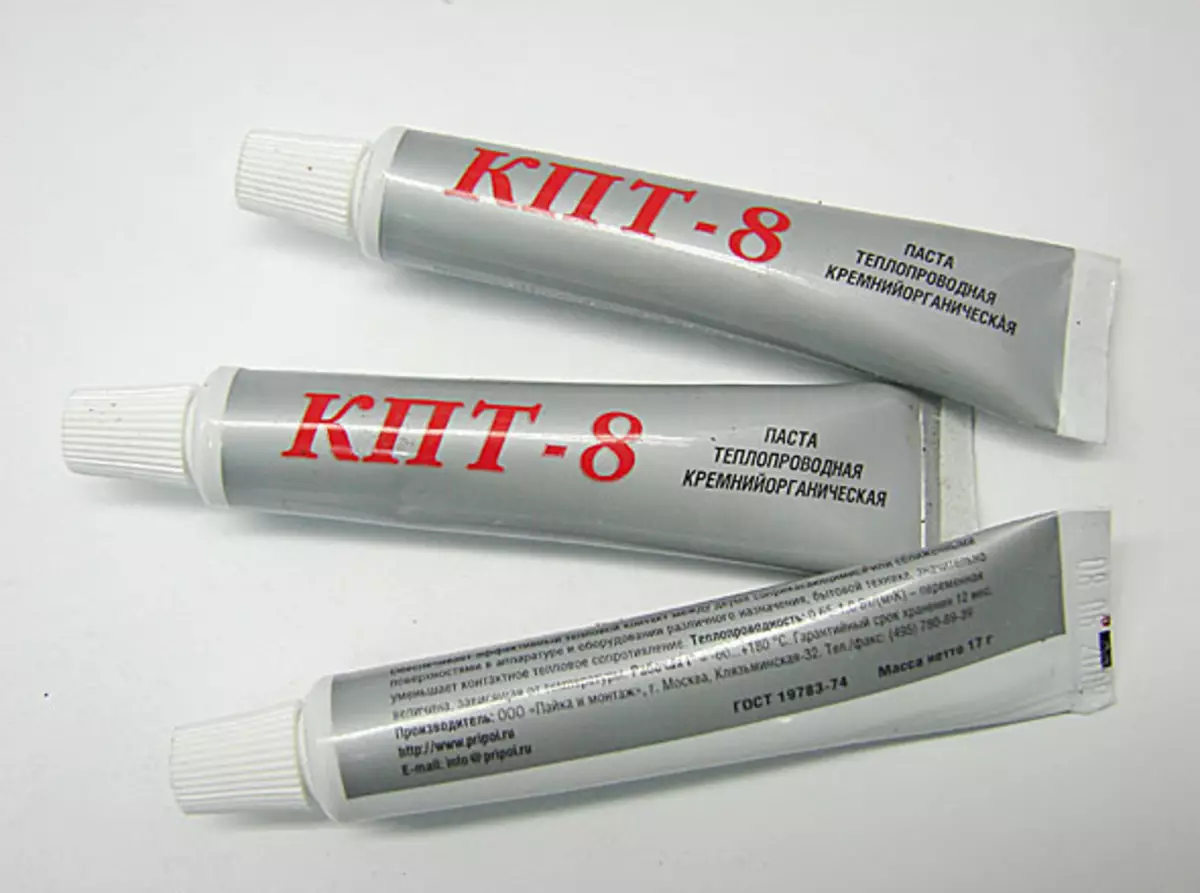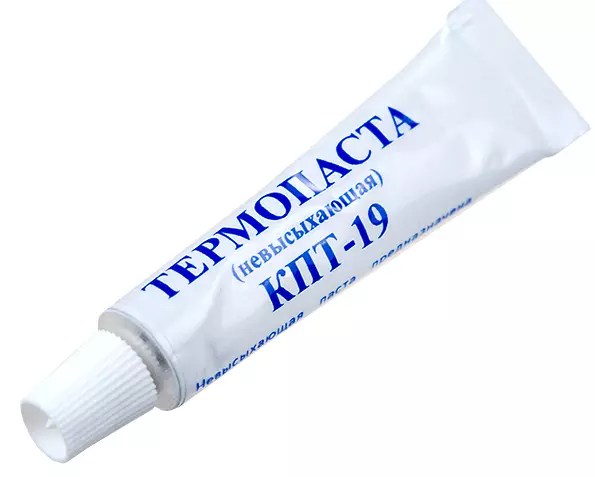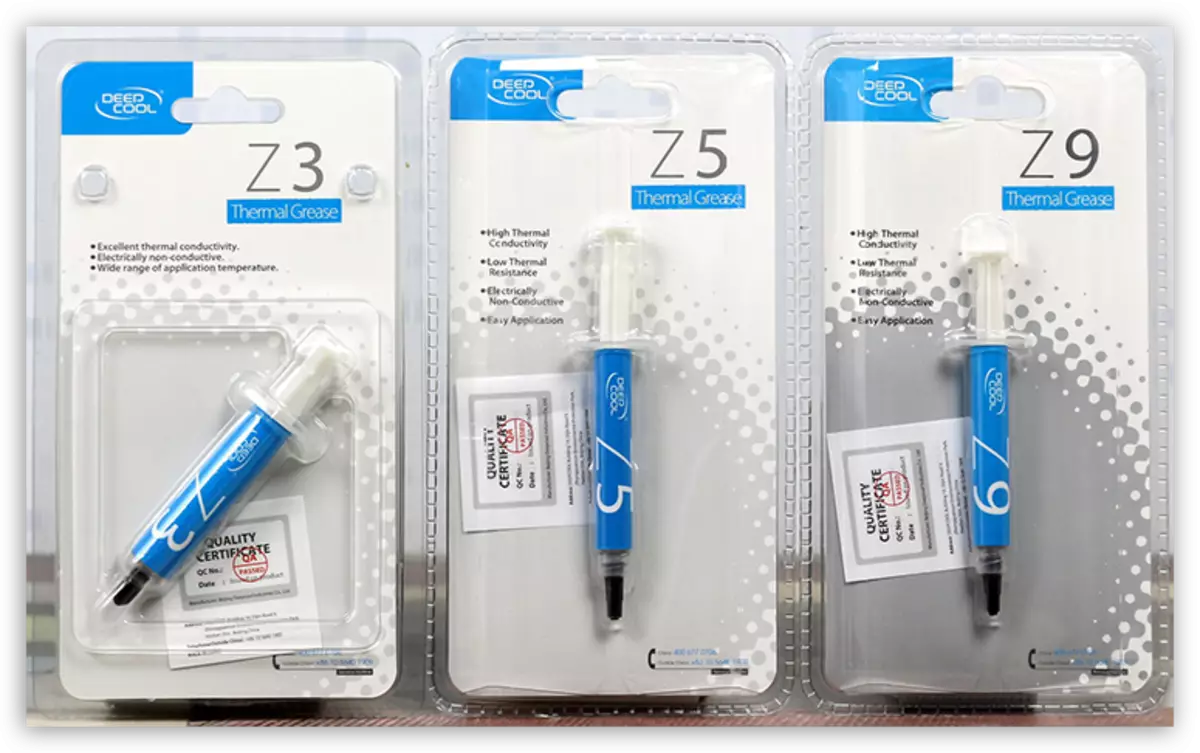
Thermal Cup (thermal interface) is a multicomponent substance designed to improve heat transmission from chip to the radiator. The effect is achieved by filling the irregularities on both surfaces, the presence of which creates air bears with high thermal resistance, and hence the low thermal conductivity.
In this article, let's talk about the types and compositions of the thermal paste and find out what paste it is better to use video cards in cooling systems.
Properties
If the composition of the thermal interface of us, as users, is not particularly interested, the ability to carry out warmly worries much more. The main consumer properties of pasta:- The thermal conductivity, which is measured in watts divided by M * K (meter-Kelvin), W / m * to. The higher this figure, the more effective the thermalcase.
- The operating temperature range determines the heating values at which the paste does not lose their properties.
- Last important property - whether the thermal interface is electrical current.
Selection of thermal paste
When choosing a thermal interface, you must be guided by the properties shown above, and of course, the budget. Material consumption is quite small: tube, weighing 2 grams, enough for several applications. If necessary, change the thermal champion on the video card once every 2 years, it is quite a bit. Based on this, you can purchase a more expensive product.
If you are engaged in large-scale testing and often dismantle the cooling system, it makes sense to look at more budget options. Below we give a few examples.
- KTT-8.
Paste of domestic production. One of the cheapest thermal interfaces. Heat conductivity 0.65 - 0.8 W / m * K, working temperature up to 180 degrees. It is quite suitable for use in the coolers of low-power video cards of the office segment. Due to some features require more frequent replacement, about once every 6 months.

- KPT-19.
Elder sister of previous pasta. In general, their characteristics are similar, but KPT-19, due to a small content of metal, is a little better heat.
This thermalcaste is conductive, so it is not necessary to allow it to enter the elements of the board. At the same time, the manufacturer positions it as not drying.

- Products from Arctic Cooling MX-4, MX-3 and MX-2.
Very popular thermal interfaces with good thermal conductivity (from 5.6 for 2 and 8.5 for 4). Maximum operating temperature - 150 - 160 degrees. These pastes, with high efficiency, have one drawback - rapid drying, so the replacement will have to be performed every six months.
Prices for Arctic Cooling are high enough, but they are justified by high indicators.

- Products from the manufacturers of cooling systems DeepCool, Zalman and Thermalright include both budget thermal paste and expensive solutions with high efficiency. When choosing, you also need to look at the price and characteristics.
The most common are DeepCool Z3, Z5, Z9, Zalman ZM series, Thermalright Chill Factor.

- Special place occupy thermal interfaces from liquid metal. They are quite expensive (15-20 dollars per gram), but have phenomenal thermal conductivity. For example, at COOLLABORATORY LIQUID PRO, this value is approximately 82 W \ m * k.
It is extremely recommended to use liquid metal in coolers having an aluminum sole. Many users have come across the fact that the thermal interface ran out the material of the cooling system, leaving on it a rather deep cavity (rods).

Today we talked about the compositions and consumer properties of thermal interfaces, as well as what pastes can be found in retail and their differences.
